
First Time Using My Portuguese Alembic Copper Still Wasn’t a Disaster After All
Weeks had passed since I had arrived home with my 3 liter shiny copper still, which I bought in a little shop in a town whose name I don’t even know between Porto and Nazare in Portugal.
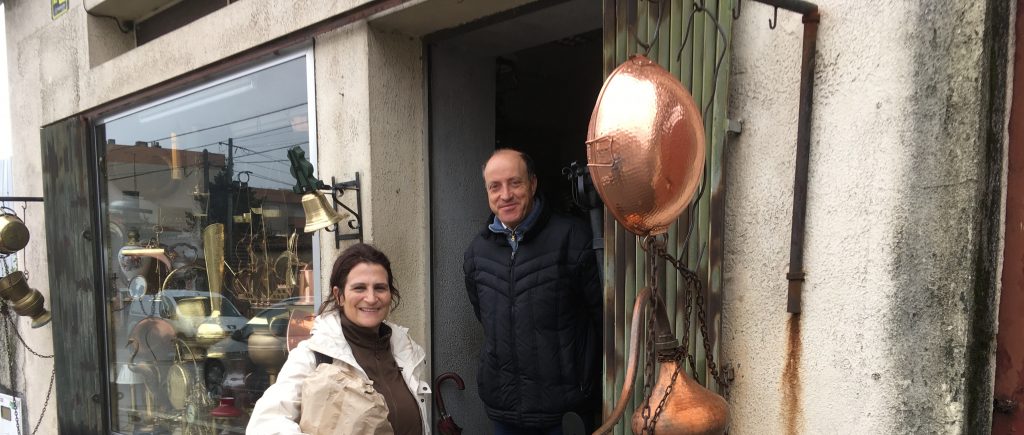
It was the kind of hand-hammered copper still you see for sale on the Internet, only it was 60 Euros. I had a goal to find such a still and was thrilled to pack it up and bring it home.
The thing was I had no idea how I would use the still. At the time my goal was to make essential oils from the rosemary, lavender, mint and other herbs that grow abundantly in my Oakland garden…plants that for now please the bees and make their way into laundry sachets.
I read a bunch of blogs about how to get started using a copper still, especially Aromatic Studies on making hydrosols. This is a nearly-complete tutorial on first use of a copper still and how to cure it, although no matter how much I read, I still had doubts about missing pieces of information.
A few of the blogs peppily allude to using fresh spring water and setting up a fire or some such heat source in the garden to distill. That vision and my reality were definitely not in sync. The only river I have runs through my crawl space, when it rains too much.
Gas stoves may not make the prettiest Pinterestable or Instagrammable photos but hey that’s life in the big city.
That’s when it’s useful to invoke the spirit of Rube Goldberg.
You may need to rig all sorts of levelers and shims and other such things to raise part of the still or your tubing to drain the water (that cools the coils as the hot water comes through) or hydrosol as it comes out.
The other thing is a lot of blogs talk about a water pump which continually adds cold water to the container with the coils (which clearly I still do not know the technical name). My low tech method was to keep adding ice to a bucket of water and pouring it in…just as I’m sure they did 2000 years ago sans ice.
Key things to know about copper stills
- You can’t make both spirits to drink and distill plants for essential oils using the same still. Bad things could happen. Like people could die. Luckily I was not out to be a moonshiner when I bought the still. If you’re making moonshine one of these stills might be more fail-safe (they’re Amazon affiliate links)—although one whiskey maker in Oregon uses a gigantic copper still which works just fine.
- Stills can explode like a pressure cooker. You need to know what you’re doing and keep it hot, cool, and drained all the right ways. None of the tutorials I found told me exactly how to do that.
- You need a huge still to make essential oil. Apparently, it is said, you need loads and loads of plant matter to get a significant amount of oil. On the other hand, any size still can generate lots of hydrosol which is basically flower or herb-infused water that makes for a lovely facial or room spray. That being said, I am going to try. Even if I get a teaspoon of mint or lavender oil from my garden, I will consider myself triumphant!
I am no distillation expert! This is simply an account of what I did…
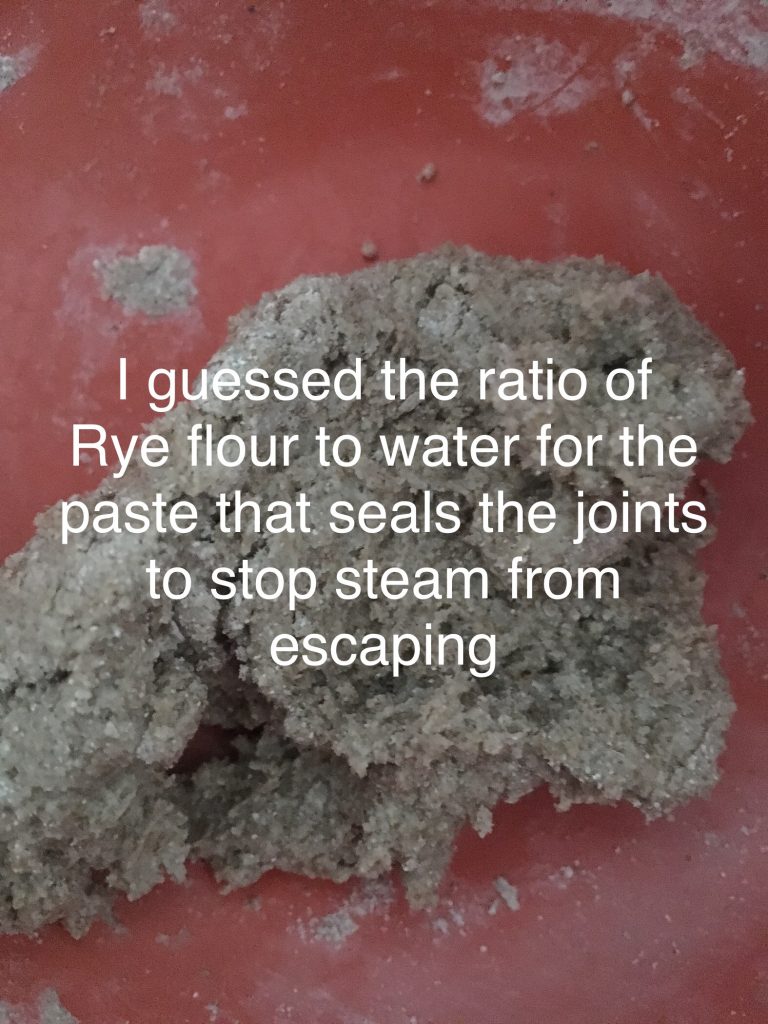

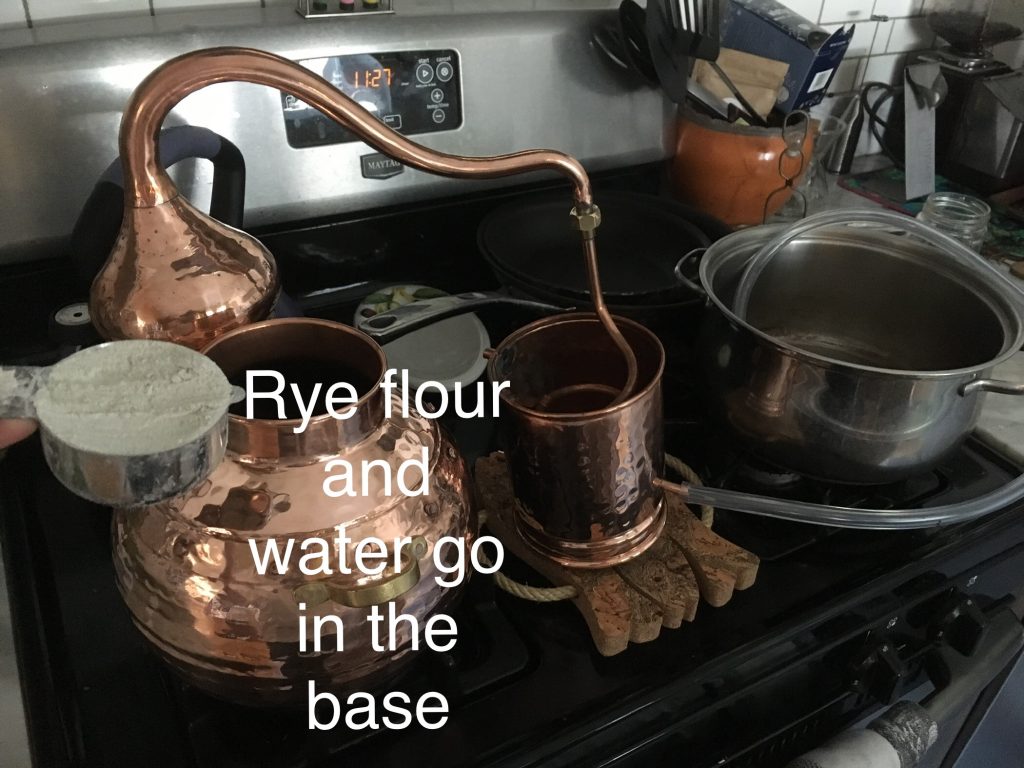
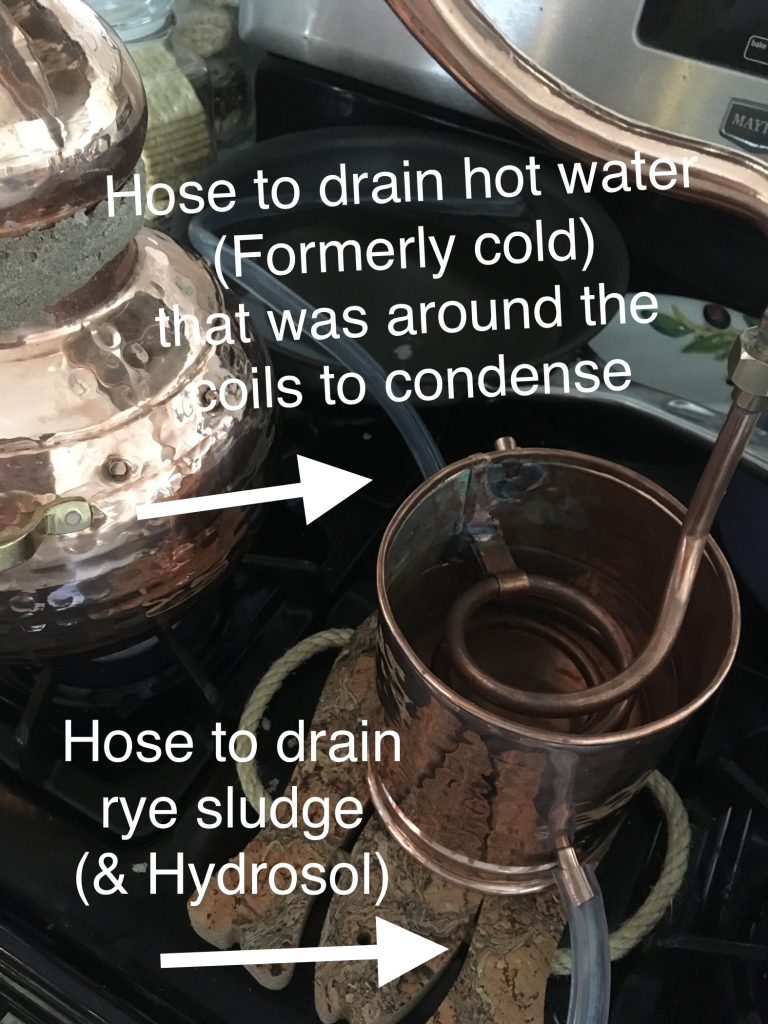
I turned the heat on medium. It took about 20 minutes before the mixture to start coming out of the tubing.
Yes I got the cute trivet with the cork fishes in Portugal too. Cork everything!

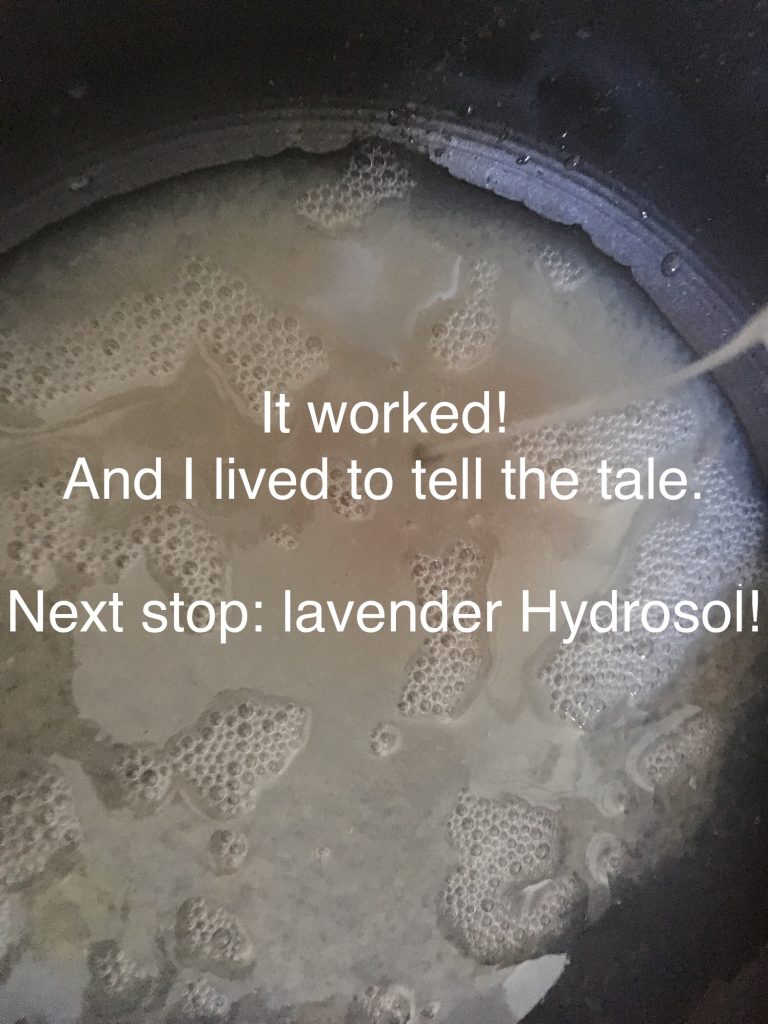
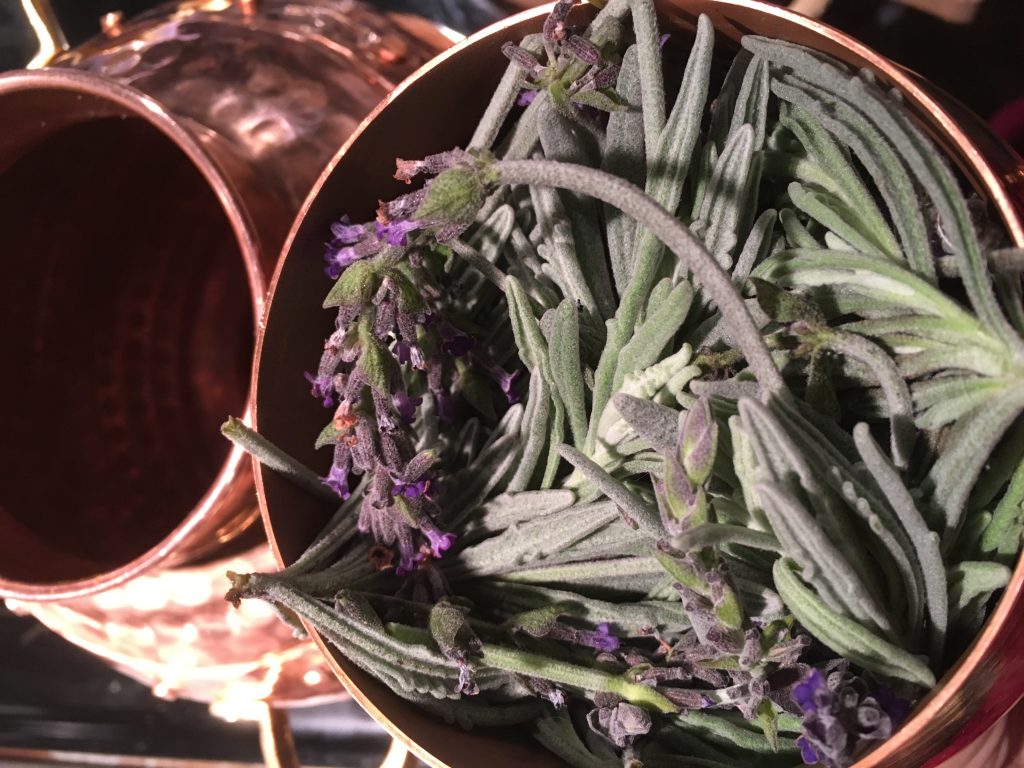
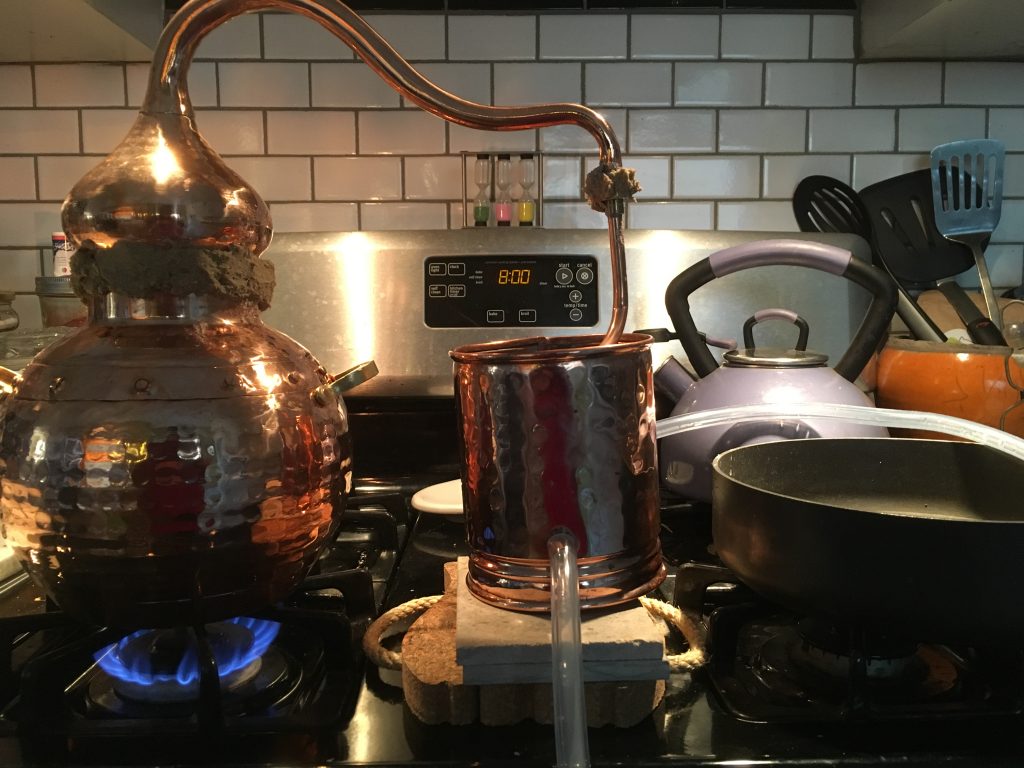

You know how my big fear was things getting out of control with pressure?
Well when the hydrosol (which actually smells a lot like witch hazel) was done dripping and I rushed the still into the sink to get cold water on it and remove the rye paste so it wouldn’t dry, the “onion” top came off way too easily. Like, I hadn’t pushed it on tightly enough.
What’s the worst that could have happened? I have no idea how much pressure actually builds up as the water boils or if the water has somewhere to drain if pressure isn’t building up.
I was just glad there hadn’t been a copper still projectile incident.
Overall it went off without a hitch…although I definitely want to look into the cold water pump as I used a lot of water and had a lot of juggling going on.
I wondered if dry ice could somehow be used in the condenser.
And that’s the tale for now!
Are you planning on using a copper still or can you fill me in on anything I’m missing?!



